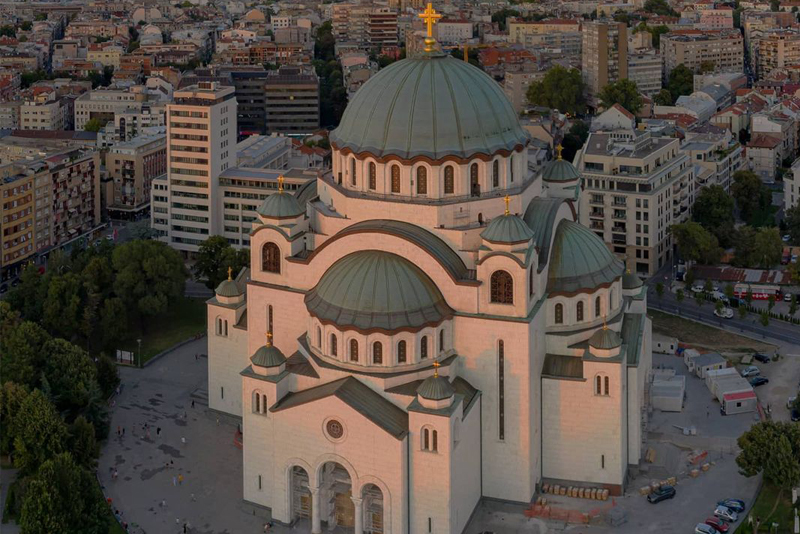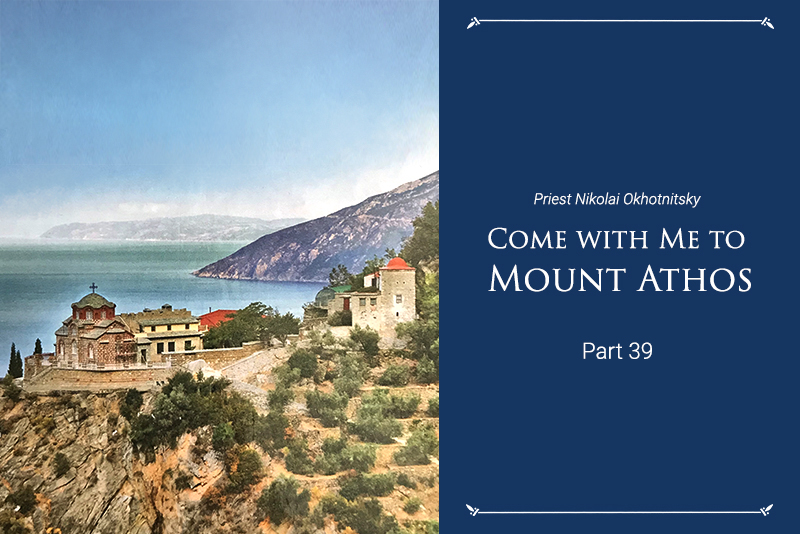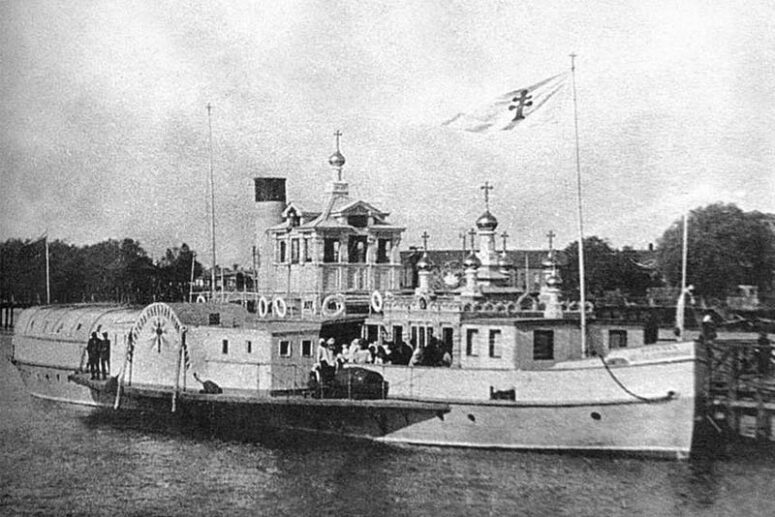
We have already devoted one of our earlier articles to unusual shapes of Orthodox churches. This time we would like to tell you about a church that is interesting not so much for its shape, but its function and its service to Orthodox people. Floating churches first appeared and successfully operated for several years in the early twentieth century. This unusual manifestation of care for fishermen and sailors is the subject of our article.
From Concept to Implementation
The idea of building a floating church was conceived by Nikolai Yankov, a tradesman from the Russian city of Astrakhan. This pious man, buying and selling fish for many years, knew much about the difficult life of fishermen. He was concerned about the inhabitants of the lower reaches of the Volga, unable to attend worship services for long periods of time due to the nature of their work. In 1903, he submitted to the diocese his proposal for the construction of a floating church. Although Yankov’s proposal was positively received, it was not implemented until 1908, when Bishop George of Astrakhan and Enotayevka, considered a new, revised design of a steamboat-based church and approved it.
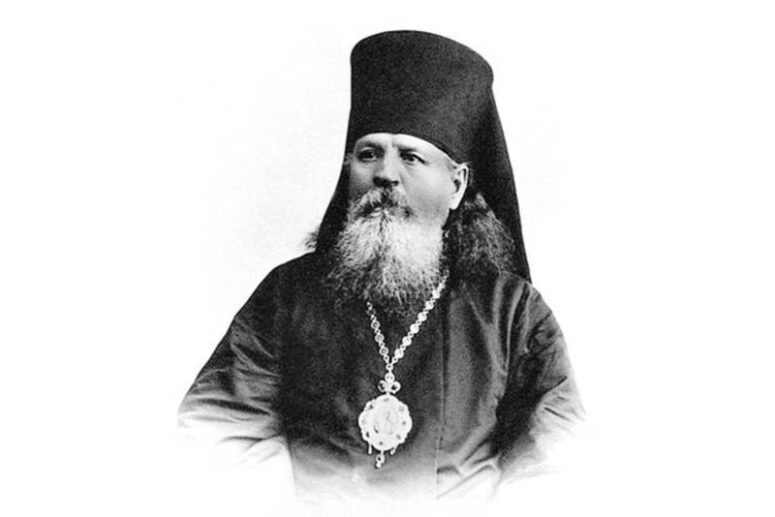
To reduce costs, it was decided to buy a ready-built steamboat and adapt it to the needs of the church. Out of 30 options, the steamship with the name “Pirate” was chosen. Repair of the ship took two months. During this time, it was radically re-equipped. A bell-tower chapel combined with the wheelhouse and the actual church were erected. Near the cabin there was enough space for a small church shop selling candles, lamps and icons. The inside of the church was decorated with ancient hand-painted icons, various decorative elements and about 220 valuable church vessels. The expensive vestments of the clergy looked impressive. Finally, the church was crowned with seven gilded domes. Thanks to generous donations, it had everything necessary for performing divine services, as well as baptisms, weddings and funerals. In addition, the steamer was fully equipped with electricity. The total cost of equipping such a “spiritual vessel” amounted to 28 thousand rubles. The church accommodated more than two hundred worshippers. Besides, it had a separate space for about a hundred church singers and an outer deck where about a hundred more parishioners could pray.
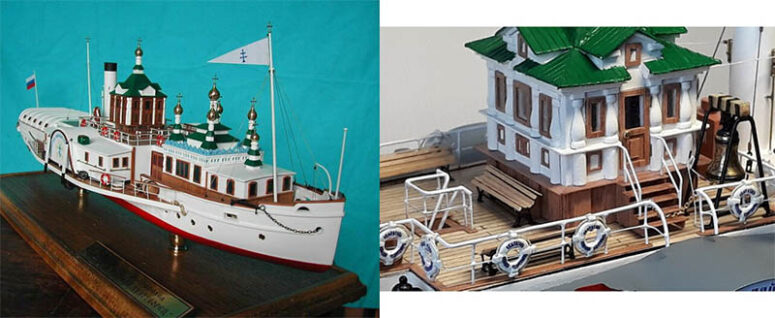
The ship also had hospital quarters with a pharmacy, a paramedic’s cabin, and a ward for several patients. The spacious refectory offered free meals for the needy. A captain, sailors, machinists, and stokers were hired to operate the ship. Most of the crew, with the exception of the captain and the mechanic, were priests and clergymen. The clergy for the floating church was provided by the Churkinsky Monastery. Among them were Hieromonk Irinarkh, Hierodeacon Seraphim, three novice singers, monk Damian, serving as a medical assistant, and even the monastery cook. Archpriest Peter Gorokhov became the first rector of the steamship church.
Consecration in Honor of the Patron Saint of Sailors
Consecration of the church took place on Palm Sunday, April 11, 1910 at the pier of the fish merchant I. Bezzubikov. This important event for Astrakhan was attended by a large number of people. The floating steamboat-church of St. Nicholas the Wonderworker was glistening in the sun with fresh white paint and seven gilded domes. Finally, the ringing of six bells in the belfry announced the beginning of the service. It was performed by the cathedral clergy, headed by Bishop George. After the Divine Liturgy, the Bishop delivered a heartfelt homily, comparing the future activity of the floating church with the ministry of Christ on the Sea of Galilee. He said, “We know that there are churches for the naval military on military ships, but we have never heard of floating churches that would meet the religious needs of the riverside and seaside dwellers… Our floating church <…> reminds me of how the Savior sailed the Sea of Galilee and taught the people standing on its shores. In a similar way, our ship will be used to proclaim the good news of eternal salvation.”
Eventually, the news about the consecration of such an unusual church reached the Emperor. In response to his report-telegram, Bishop George received a reply from Emperor Nicholas II. The Sovereign wrote, “I sincerely rejoice at the good deed of meeting the spiritual needs of the fishermen and I thank everyone for the expressed feelings.”
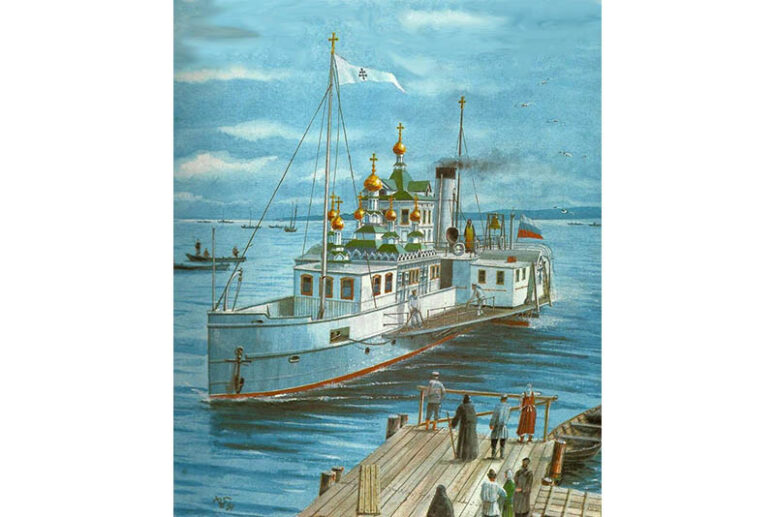
Parishioners
The floating church of St. Nicholas the Wonderworker was designed to serve in the Volga delta, where there were a large number of fishing settlements on islands and piles. It was also intended for large vessels in the Caspian Sea, unable to come close to Astrakhan shores because of the shallow water. The so-called “floating city” existing at that time in the Caspian Sea, some 220 km from Astrakhan, had a population of up to several thousand people. It consisted of hundreds of ships, barges, steam and sailing schooners, as well as oil pumping machines, floating offices, shops, as well as postal, telegraph and customs offices, standing on dead anchors. Apart from transshipping goods, pumping oil and transferring passengers from sea to river and back, it was also a place of everyday life for seafarers, clerks, merchants and workers, who together with their families would spend seven or eight months away from land and consequently away from their home parishes. The newspapers of that time wrote, “In the lower Volga, there are all the essentials of a port as well as everything necessary for everyday life, but no church to satisfy the soul.” This made the new steamer church a great contribution into the life of the region.
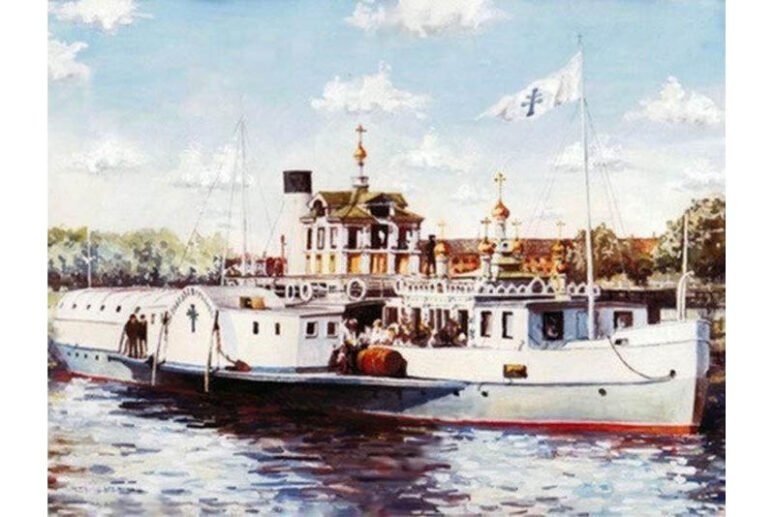
The Ministry
St. Nicholas steamship church went on its first voyage on April 16, 1910, performing Easter services for sailors. During periods when fishing was prohibited, the church visited coastal villages and farms, whose inhabitants had previously been actively contributing towards its construction.
In addition to serving the Orthodox Russians, the crew of “St. Nicholas the Wonderworker” became involved in the catechization of unbaptized Kalmyks. Hieromonk Irinarkh, fluent in the Kalmyk language, was in charge of this ministry.
Interestingly, in several years of service, the steamer survived many storms. Its patron St. Nicholas made sure that neither the people nor the ship suffered in any way.
Sad Ending
After serving for five shipping seasons, in 1916 the steamboat church did not set sail on its usual route. The 15 February 1916 issue of Moscow Kopeika newspaper wrote: “The Right Reverend Philaret arrived at Astrakhan, found the floating church dilapidated and concluded that its maintenance was too costly. (A/n: It cost between six and eight thousand roubles a year to maintain the ship, but this substantial sum had previously been covered by generous donations.) Since, according to the canonical rules, the sale of a church is not allowed, Bishop Philaret rendered the floating church as a “discarded steamer” in order to sell it for scrap, like old fire pumps and other junk.”
The Bishop’s intention to dispose of the floating church sparked protests among the people. As a result, Bishop Philaret (Nikolski) himself retired a few months after the complaint of the Churkinsky Monastery abbot. Although the activity of the steamboat church continued until 1918, almost all valuable icons, as well as church books and utensils were transferred from the ship to the Churkinsky St. Nicholas Monastery. After the First World War began, the funding of the steamship was significantly reduced. Then the revolution broke out. The Bolsheviks removed the domes from the ship, and turned it first into a rescue boat, and then into a floating theatre. Eventually, the vessel was sent for scrap.
Modern Times
After the collapse of the USSR, floating churches began to reappear in Russia. Today, several such vessels are known. Among them are the floating church of St. Innocent of Moscow, consecrated in 1998, “St. Nicholas” on the Volga-Don Canal and “St. Vladimir”, converted from a military landing ship, on the Volga.

Nowadays, such churches are still rather unusual for most Orthodox believers. This can be explained by our limited knowledge of life in other countries and regions, where people often work and live in specific conditions without the organized infrastructure. Perhaps with advances in transport and technology, the need for such floating churches has become less acute these days. Nevertheless, as we see in the example of Nikolai Yankov and his unusual dream, a person’s sincere need for church prayer and living communion with God can accomplish extraordinary things and help him become closer to Christ and His Church under any circumstances.




